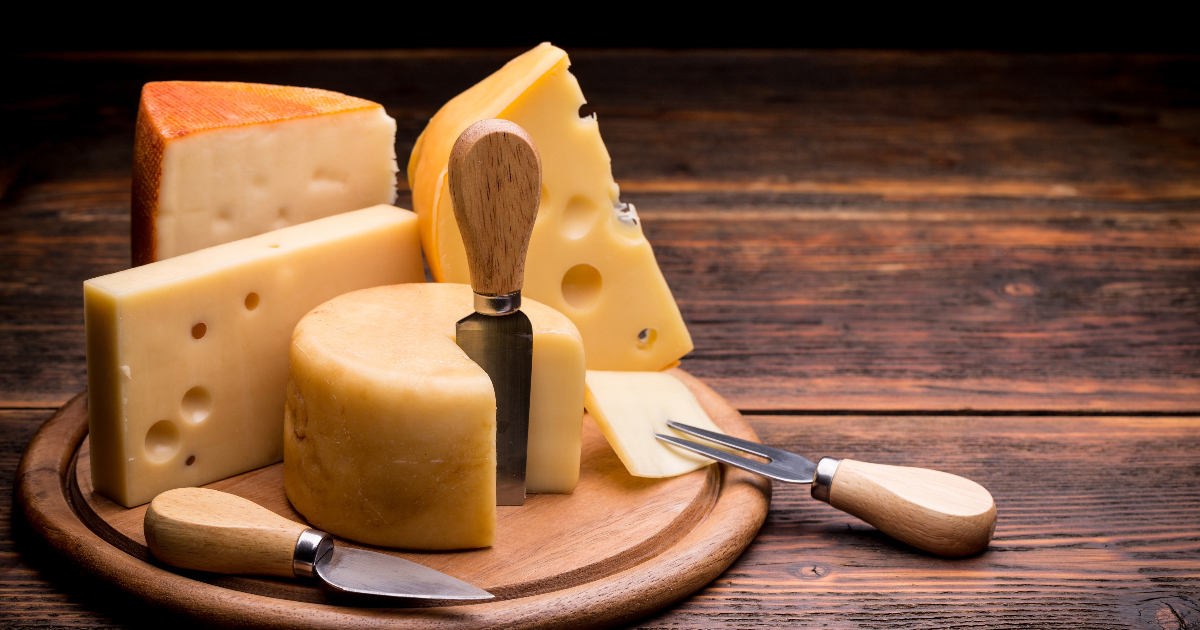Whether you're preparing an elegant cheese board or simply buttering your morning toast, having the right knife makes all the difference.

While they may seem similar at first glance, cheese knives and butter knives are designed for different purposes.
Design and Blade Differences
The most noticeable difference between butter knives and cheese knives is in their blade design.
Butter Knife Design
- Short blade length (5 to 7 inches)
- Completely dull edges
- Usually no pointed tip
- Straight-edged blade
- Often rounded safety tips
Cheese Knife Design
- Longer blades (7 to 9 inches)
- Sharp cutting edges
- Serrated or scalloped edges
- Pointed tips for piercing
- Shaped specifically for different cheeses
The simple, dull design of a butter knife makes it ideal for spreading without damaging soft bread products. In contrast, the sharp, serrated blade of a cheese knife allows it to slice through firm cheeses with ease.
Many cheese knives also have holes orindentations in the blade to prevent cheese sticking as you slice it. Other specialized cheese knives like a cheese plane shave thin layers off the top instead of cutting slices.
Key Takeaway: Butter knives have short, dull, straight blades while cheese knives have longer, sharp, serrated blades.
Common Uses and Applications
Butter knives and cheese knives each shine when used for their intended purpose. Understanding what foods pair best with each blade ensures you choose the right knife for the task.
Typical Butter Knife Uses
- Spreading butter
- Applying jams, jellies, honey, or chocolate spreads
- Spreading creamy foods like cream cheese or mayonnaise
- Topping muffins, scones, cupcakes, and other baked goods
A butter knife's dull blade prevents tearing delicate baked goods or breads as you spread.
Typical Cheese Knife Uses
- Slicing hard cheeses like cheddar, Parmesan, or Swiss
- Cutting semi-soft cheeses like Gouda or Monterey Jack
- Spreading soft cheeses like Brie or chèvre
- Topping crackers and breads with cheese slices or spreads
The holes and sharp edges of a cheese knife allow neat, crumble-free slices.
Understanding when to use a butter knife versus a cheese knife ensures you apply the right blade for spreads, slices, or toppings.
Key Takeaway: Butter knives spread soft foods like butter without damaging breads. Cheese knives cut through hard cheeses cleanly.
Pros and Cons of Each Knife Type
Both butter knives and cheese knives provide unique benefits along with a few limitations. Consider the pros and cons of each to determine when specialized cheese knives are needed or when a simple butter knife will suffice.
Butter Knife Pros
- Dull blade won't damage delicate foods
- Versatile for many soft spreads
- Safer due to rounded tips
Butter Knife Cons
- Not suitable for cutting hard foods
- Spreading cold butter can be difficult
- Requires more force to cut through dense breads
Cheese Knife Pros
- Sharp blade slices firm cheeses cleanly
- Specialized for various cheese types
- Creates impressive cheese presentations
Cheese Knife Cons
- Sharp points require safe handling
- Hand washing is recommended
- Mostly limited to cheese and vegetable uses
For most basic spreading tasks, a butter knife offers versatility and safety. However, to showcase an array of artisanal cheeses, specialized cheese knives create elegant presentations.
Care and Maintenance Best Practices
Caring properly for both butter knives and cheese knives helps preserve their performance. Be sure to wash, dry, and store them correctly.
Butter Knife Care
- Hand wash in warm water using mild detergent
- Dry thoroughly after each use to prevent residue buildup
- Store in a dedicated knife block or countertop holder
Cheese Knife Care
- Hand wash gently in warm water using mild detergent
- Rinse and dry right away to avoid dairy residue
- Store safely in a specialized knife block or sheath
- Sharpen occasionally with a knife sharpener or professional service
Avoid soaking wood-handled cheese knives or placing knives with blades facing up in dishwasher. Allowing both knife types to air dry prevents moisture damage and corrosion. Caring properly for your specialized cheese tools ensures long-lasting performance and attractive presentations for years to come.
| Tool | Butter Knife | Cheese Knife |
|---|---|---|
| Blade Type | Short, dull, straight | Long, sharp,serrated |
| Best Uses | Spreading soft foods | Slicing firm cheeses |
| Care Tips | Hand wash and dry thoroughly | Gentle hand washing, sharpen occasionally |
FAQs
Can I use a butter knife to slice cheeses?
No, a butter knife's dull blade is unsuitable for cutting firm cheeses. Attempting to cut hard cheeses with a butter knife will likely bend the blade or crush delicate cheeses rather than slicing cleanly. Always opt for a sharper cheese knife when slicing semi-hard or firm cheeses.
Should cheese knives be sharpened?
Yes, it's important to sharpen cheese knives occasionally to restore a sharp cutting edge. Using a dull cheese knife makes slicing difficult and can crush or tear soft cheese varieties. Invest in a knife sharpener or take cheese knives to a professional sharpening service once a year or when knives seem dull.
Can I cut breads and baked goods with a cheese knife?
No, the sharp serrated edge and pointed tip of a cheese knife can damage delicate breads, pastries, or cakes. A butter knife's duller blade allows you to spread frostings, creams, or jams onto desserts without tearing or cutting through them fully. Reserve cheese knives strictly for firm dairy products.
Is it safe to put cheese knives in the dishwasher?
It's best to avoid the high heat and harsh detergents in dishwashers when cleaning finer cheese knives. The moisture and chemicals found in dishwashers can dull knife edges faster and also damage fancy handles over time. Hand washing cheese knives gently preserves their appearance and slicing ability.
Conclusion
Understanding the key differences between butter knives and cheese knives makes it easy to decide when to use each.
A butter knife's short, dull blade spreads soft foods cleanly without damaging breads or muffins.
A cheese knife's sharp edges and pointed tip neatly slice through everything from hard Parmesan to soft Brie.

